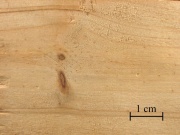China fir
Description
A coniferous evergreen timber tree of the genus name Cunninghamia. They are native to China, Taiwan, northern Vietnam and Laos, where they grow to mature heights of 165 feet (50 m) tall. The tree's general shape is conical with tiered, with horizontal branches that are often somewhat pendulous toward the tips. Cunninghamia bears softly spined, leathery, stiff, green to blue-green needle-like leaves that spiral around the stem with an upward arch; they measure 0.8 to 2.8 inches (2 – 7 cm) long and 0.12 to 0.2 inch (3 – 5 mm) broad at the base, and bear two white or greenish-white stomatal bands underneath and sometimes also above. The foliage may turn bronze-tinted in very cold winter weather.
Cunnighamia is a prized timber tree in China, producing soft, highly durable scented wood similar to that of coast redwood (Sequoia sempervirens) and sugi (Cryptomeria japonica). It is used in particular for manufacture of coffins and in temple building where the scent is valued.
Seed cones are small and inconspicuous at pollination in late winter, the pollen cones in clusters of 10 to 30 together, the female cones singly or 2 to 3 together. The seed cones mature after 7 to 8 months at 1 to 1.8 inches ( 2.5 – 4.5 cm) long, with ovoid to globose shape, with spirally arranged scales; picturesque conifer from China has a heavy trunk; stout, whorled branches; and droop- ing branchlets. It grows at a moderate rate to 30 feet tall with 20 feet spread. Stiff, needlelike, sharp-pointed leaves are 12 inches long, green above and whitish beneath. Its brown, 1- to 2 inches cones are interesting but not profuse. Among palest of needled evergreens in spring and summer, China fir turns red- bronze in cold winters. Needs protection from hot, dry wind in summer and cold wind in winter.
Synonyms and Related Terms
Cunninghamia lanceolata
Physical and Chemical Properties
Resources and Citations
- American Conifer Society: Link
